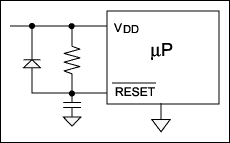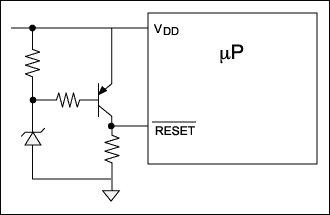检测电路保持您的微处理器控制-Supervisory Cir
[09-13 17:05:09] 来源:http://www.88dzw.com 控制技术 阅读:8332次
文章摘要:Abstract: Understand the value of a µP supervisor to ensure proper system operation during power-up, power-down, and brownout situations (undervoltage monitoring). In addition, provides information about overvoltage and windowed monitoring. Describes additional features such as manual reset, w
检测电路保持您的微处理器控制-Supervisory Cir,标签:计算机控制技术,工厂电气控制技术,http://www.88dzw.comAbstract: Understand the value of a µP supervisor to ensure proper system operation during power-up, power-down, and brownout situations (undervoltage monitoring). In addition, provides information about overvoltage and windowed monitoring. Describes additional features such as manual reset, watchdog timer, battery backup, and chip enable gating. Discusses the need for multi-voltage monitoring.
Microprocessor-supervisory circuits have been around for so many years that they are often taken for granted. Not so the modern integrated-circuit versions, which range from simple three-terminal reset chips to complex multifunction devices. Maxim alone offers nearly 100 part numbers, each with variations that total thousands of products. By understanding these products and their basic functions, board-level designers can handle the simplest and most complex of applications.
The most fundamental function of a microprocessor (µP) supervisor is that of "power-on-reset" (POR). Otherwise well-behaved µP-based systems can exhibit problems during power-up or when the supply voltage sags temporarily (brownout). For many years, the partial solution to this problem has been the addition of a resistor, a capacitor, and a diode to the µP's Active-low RESET line (Figure 1).

Figure 1. This crude supervisory circuit is only a partial solution to the problem of monitoring VDD.
The added RC causes Active-low RESET to be held low after the supply voltage starts to come up. If the voltage rises quickly enough, Active-low RESET will be sufficiently low to hold the µP in reset, allowing its circuitry to settle down before normal operation is resumed. When the power supply turns off and drops to zero, the diode ensures a prompt high-to-low transition for Active-low RESET as well.
This method works reasonably well for power-up as long as the power supply rises quickly with respect to the RC time constant. The circuit's job is to protect the µP from less-than-perfect power-ups, but it relies on the supply voltage to rise quickly enough for that purpose. It is also unreliable in resetting the µP during a brownout. To achieve reset for that condition, the supply voltage must drop to a level of VIL minus one diode drop. Long before it reaches this level, however, the supply voltage is well below its minimum spec.
To handle this situation, microprocessor vendors often recommend a circuit comparable to that in Figure 2. It forces a reset when the power supply drops, but voltage accuracy is limited to that of the zener diode combined with errors associated with the transistor characteristics.

Figure 2. This circuit adds brownout capability to the VDD monitor in Figure 1, but it offers limited accuracy and utility.
[1] [2] [3] [4] [5] [6] [7] [8] 下一页
Tag:控制技术,计算机控制技术,工厂电气控制技术,控制技术
《检测电路保持您的微处理器控制-Supervisory Cir》相关文章
- › 恒流源供电和摘机检测电路图
- › 低功耗窗口温度检测电路图
- › 过零检测电路图
- › 电压输出式角度检测电路图
- › 电压检测电路图
- › 遥控红外检测电路图
- 在百度中搜索相关文章:检测电路保持您的微处理器控制-Supervisory Cir
- 在谷歌中搜索相关文章:检测电路保持您的微处理器控制-Supervisory Cir
- 在soso中搜索相关文章:检测电路保持您的微处理器控制-Supervisory Cir
- 在搜狗中搜索相关文章:检测电路保持您的微处理器控制-Supervisory Cir
分类导航
最新更新




 当前位置:
当前位置: